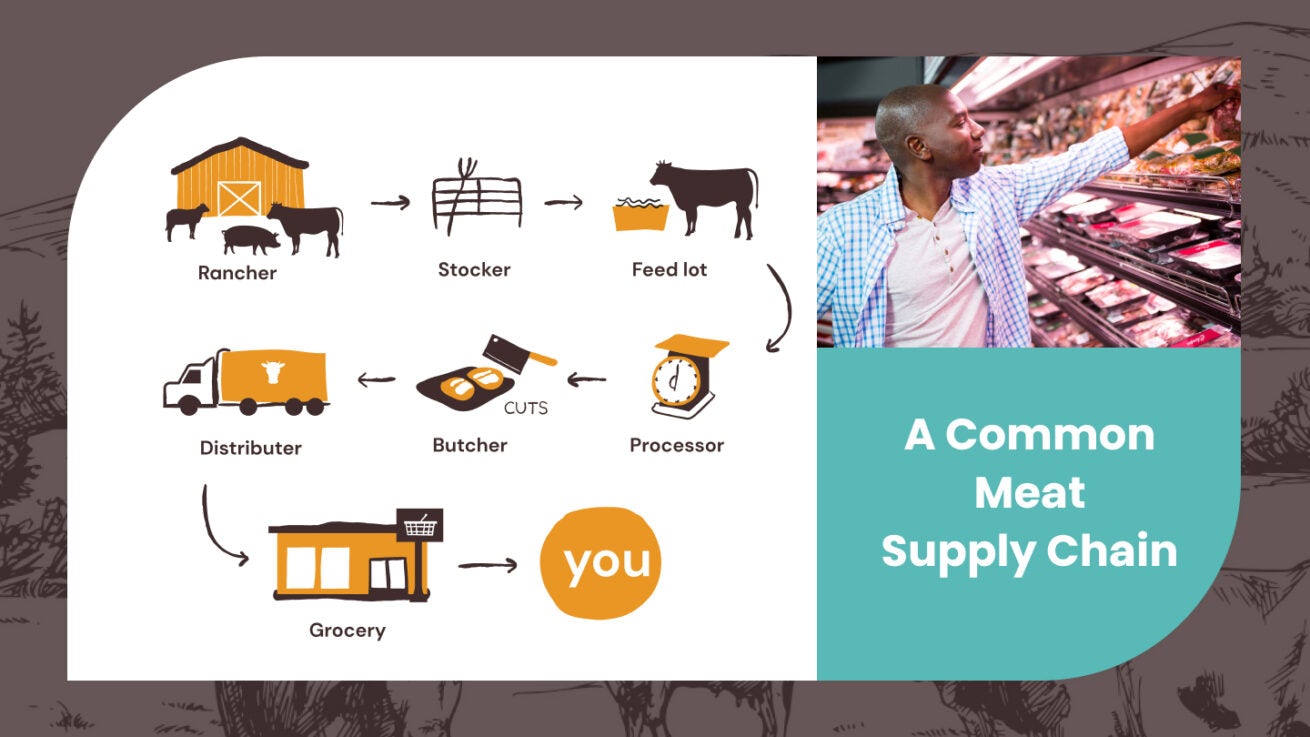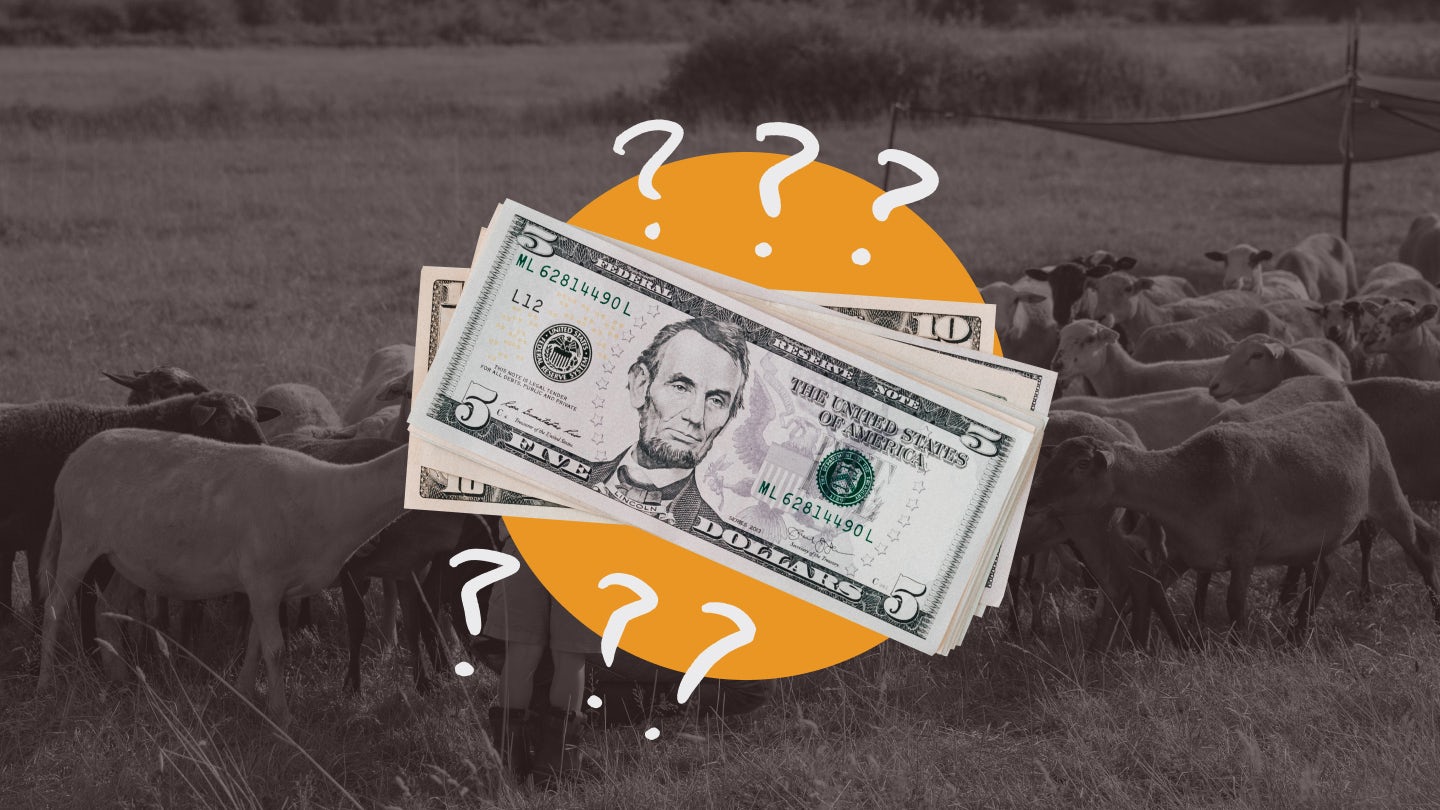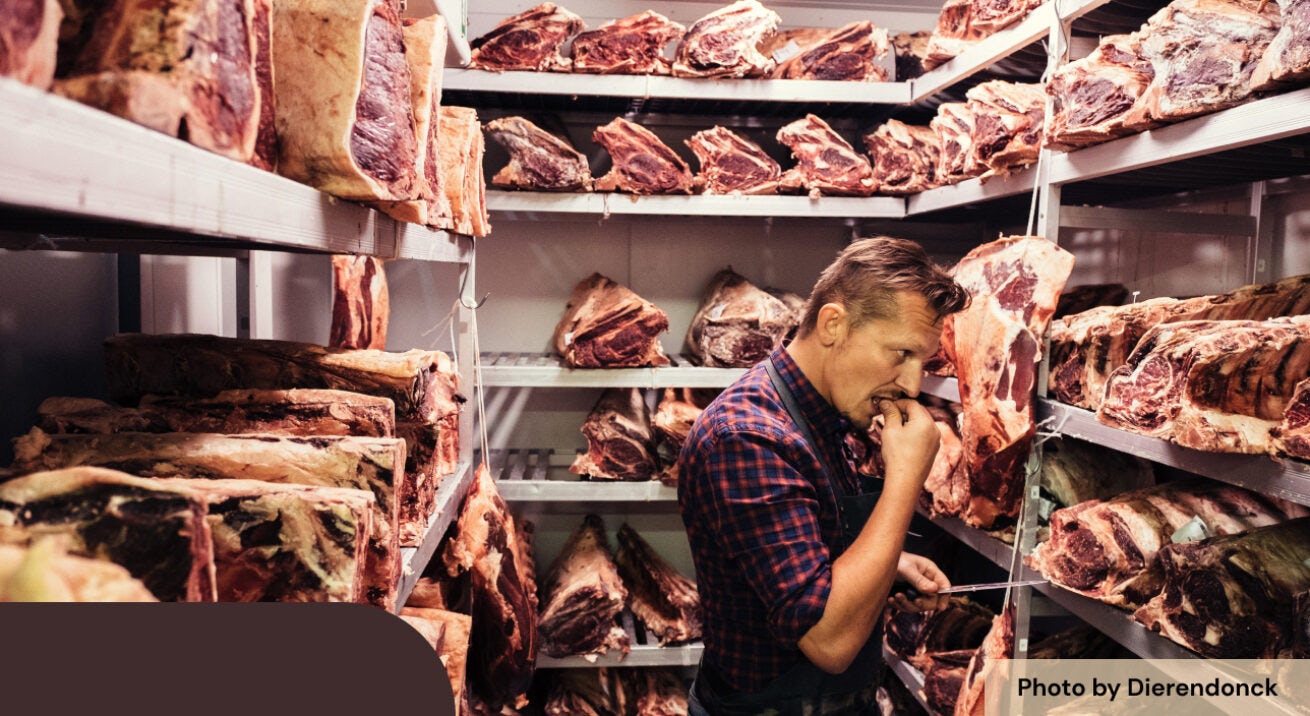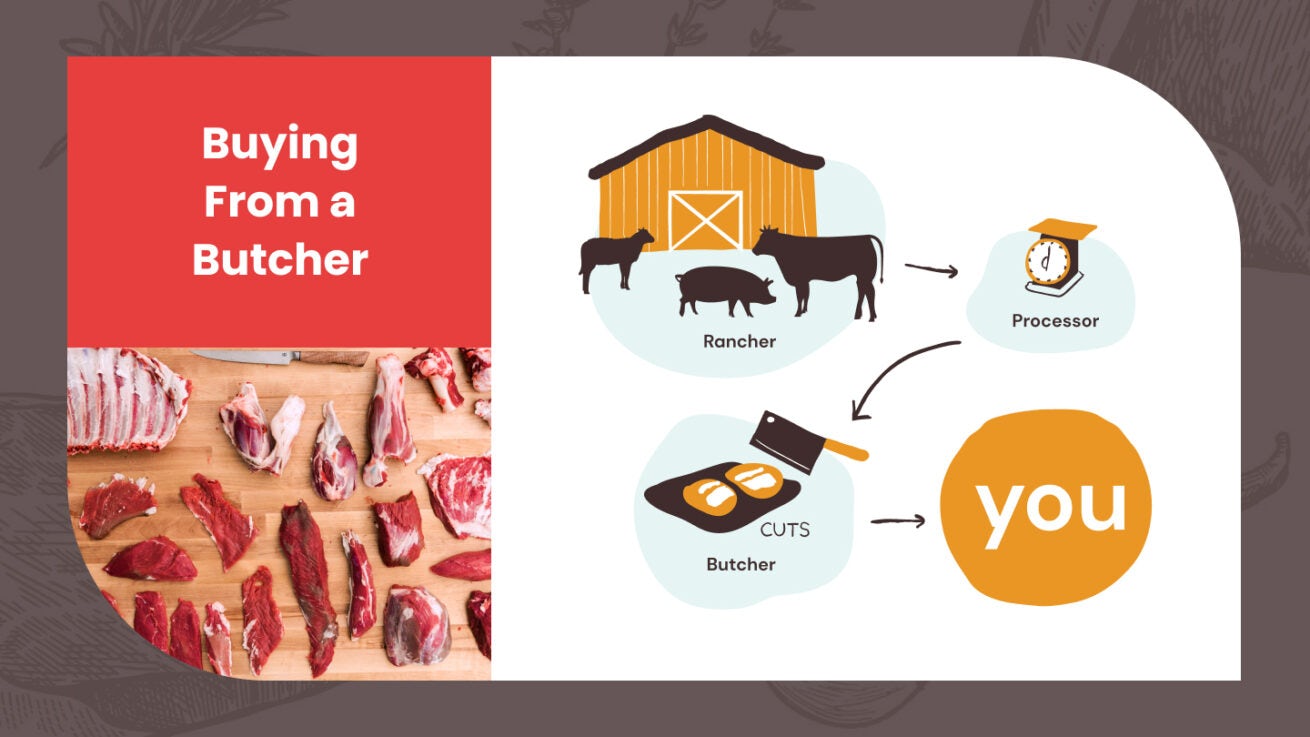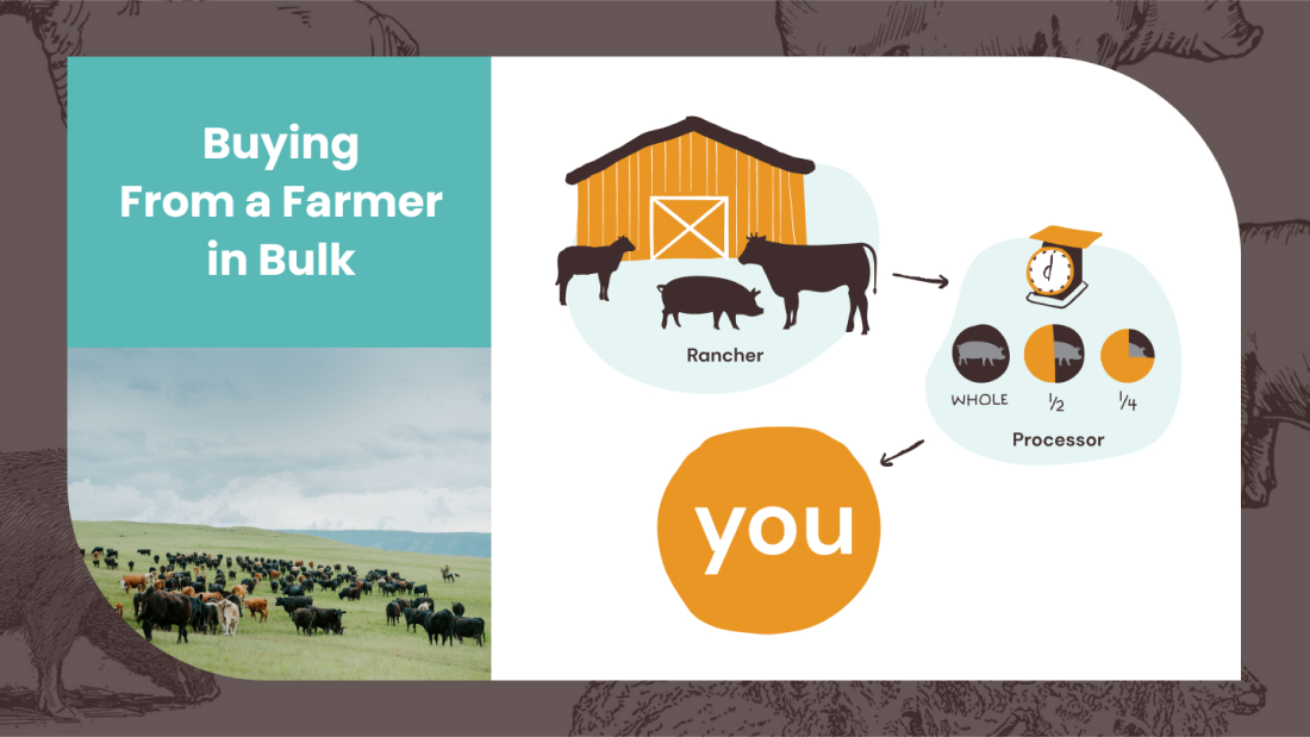What’s behind the cost of Good Meat that you can see?
The price a farmer charges for an animal share is based on the per pound price they determine multiplied by the weight of the animal you’re buying. Just as Good Meat production practices and costs can vary, the weight of animals at slaughter time varies, depending on the time of year, the breed, their age at harvest, and even the weather that season. If farmers bring animals into the slaughterhouse that aren’t standardized weights, this can lead to higher costs at the processing facility, compared to an industrial system where a pig is always the same breed and the same weight. Thus, the cost of Good Meat varies
Weight and price variations aside, for cow, pig, lamb, goat, or other animal shares this is more or less how the cost charged to is determined:
The rancher and the processor provide two separate services and typically, though not always, get paid separately. The rancher gets paid for the animal that they raised. The processor gets paid for slaughtering the animal and then for cutting and wrapping the meat.
The rancher charges a price per pound. The total price paid to the rancher is typically going to be calculated based on the carcass weight (although sometimes, based on regulations around meat shares, it could be based on live weight, in which case the price is going to be lower, because live weight is higher than carcass weight). You can read more about how this whole carcass vs live weight thing works below. For example, if you bought a whole hog, the carcass weight is 150 pounds, and the rancher charges $5 per pound, you owe the rancher $750. In other words, you are not paying solely for the amount of edible meat you take home, but for all the muscle, fat, trim, and bone on the entire carcass.
The processor charges a fee for slaughtering. In addition, they charge for cutting and wrapping all the meat. The slaughter fee is usually a flat fee, but it can also sometimes be be based on carcass weight. The cost for cutting and wrapping is usually standardized but can change depending on what you ask for. On a basic level, it would work like this: if the butcher charges $0.50 per pound to cut and wrap your 150-pound hog, you would owe the butcher $75 plus the slaughter fee (which often varies between $50-$100 per animal).
